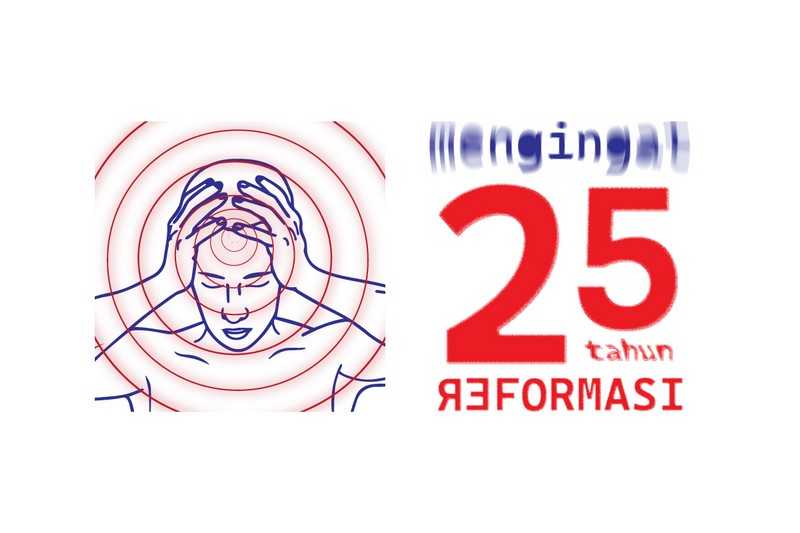Indonesia 1989 ~ "The Reform era might arguably be conceived as a point that was hoped to pave the way for a brand-new system of governance, where tyranny was doomed to end and a new chapter was fought for. The era kicked off with the culmination of political hostilities and dynamics taking place for years prior, giving birth to social movements on the basis of morale and a struggle for freedom. Many died in vain, went missing, or were deprived of a voice". ~ "REMEMBERING 25 YEARS OF REFORMATION is not (just) about the Reformation. Nor is it about glorification, especially at this point in our lives when we are still struggling for democracy” ~ this sentence opens the statement of an exhibition, spread over several art spaces in Yogyakarta and involving 33 cross-generational artists coming from a variety of cultural-politics backgrounds in Indonesia. Organised by Cemeti - Institute for Art and Society and curated by Alia Swastika, Dwiki Nugroho Mukti and Savitri Sastrawan.
Artists:
Agung Kurniawan — Amal Purnama — Arif Furqan — Arifa Safura & DJ Rencong — Benny Wicaksono — Dolby— Dyan Anggraini — Fionny Mellisa — FX Harsono — Gisela Maria — I Ngurah Suryawan — I Wayan Bendi —Kharisma Adi — Krisna Jiwanggi Banyu — Meliantha Muliawan — Moch. Krismon Ariwijaya — Mujahidin Nurrahman — Perkawanan Perempuan Menulis — Popok Tri Wahyudi — Pujo Nugroho — Raslene — Redhy Murti — SkolMus — Slinat — Sudut Kalisat — Syska La Veggie — Taring Padi — Tennessa Querida Waksman —Theresia Agustina Sitompul — Titarubi — Wimo Ambala Bayang — Woven Kolektif — Yaya Sung
Cemeti – Institute for Art and Society (formerly ‘Cemeti Gallery’, then ‘Cemeti Art House’) is Indonesia’s oldest platform for contemporary art, founded in Yogyakarta in 1988 by artists Mella Jaarsma and Nindityo Adipurnomo. Cemeti offers a platform for artists and cultural practitioners to develop, present and practice their work in close collaboration with curators, researchers, activists, writers and performers, as well as local communities across Yogyakarta.
The programme takes shape through exhibitions, workshops, talks, assemblies, publications, long-term research threads and a three-month artist-in-residence programme (held twice annually).
The subtitle ‘Institute for Art and Society’ was added in 2017 by a new team to express the organisations commitment to socially and politically engaged artistic practices, exploring the possibility for a gallery to act as a site for civic action.

